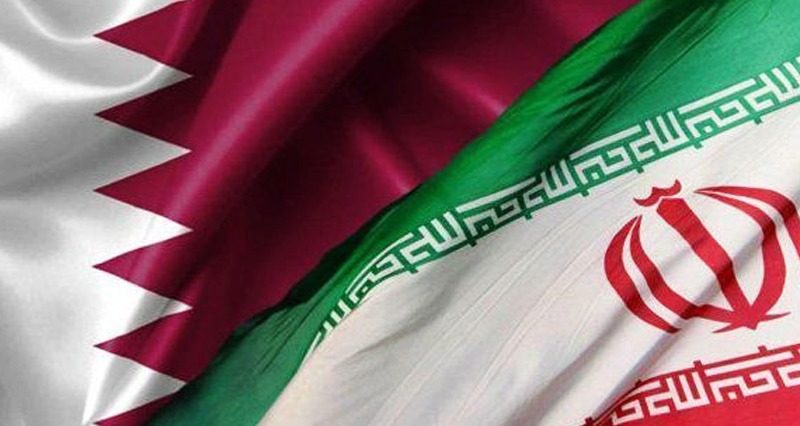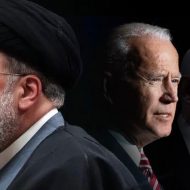Qatar is Iran’s southern neighbor and has a similar economic structure to Iran. The two neighbors have an economy that relies on their huge energy resources, so there was no significant opportunity for cross-border trade between the two countries. Political relations between Iran and Qatar on both sides of the Persian Gulf have so far been stable. Contrary to the common belief that Iran’s relations with most of the Arab Gulf states go through high-ups and downs and despite Iran’s continuing dissatisfaction with Qatar, Tehran and Doha’s relatively large share of South Pars gas field, the Iran-Qatar relations are stable, warm and predictable.
It should be noted that these relations have never been as close to the relations between Iran and Oman, Iran’s closest partner in the Persian Gulf. A close look at the two countries’ relations at critical junctures shows that the relationship between Iran and Oman is different. For example, at a time when most Gulf states welcomed the escalation of Iran’s nuclear crisis and Tehran’s confrontation with the West, Qatar openly stood by Iran or openly opposed increasing pressure on Iran.
Qatar ambassador resumes work in Tehran, in defiance of Saudi Arabia, allies demands pushing for isolation of Iran #QatarCrisis pic.twitter.com/d1yuWZS8GX
— Press TV (@PressTV) August 26, 2017
GAS EXPORTING COUNTRIES FORUM
A plan which was initiated by Iran to establish and control natural gas prices in the world was formed with the support of Qatar and Russia. While both Iran and Qatar, are competing with each other in natural gas exports and at times share differences in energy, they supported each other and were successful in forming a new structure reminiscent of OPEC. Although the organization was originally designed by Iran, it was hosted by the permanent secretariat of the Doha capital of Qatar.
Qatar is one of the most important producers of liquefied natural gas in the world and produces more than 5 billion cubic meters of gas annually, equivalent to about 5% of the world market demand, it should be note that Iran did not produce LNG.
SOUTH PARS FILED
Iran and Qatar shared South Pars filed.Qatar has begun developing the “North Dome” since 1991 by giving its largest share of the field to US and European oil giants, but Iran has started developing South Pars since 2001. This means that are 10 years behind Qatar at the beginning of Iran operations. Between 1991 and 2001, Qatar extracted about 210 billion cubic meters of gas from the field, earning about $60 billion in revenue for Qatar at the time. Qatar’s northern gas field is also a joint venture with Iran, which recently bought $1.5 billion from Russia’s major Russian oil company. Jim Crane, a professor at Boston University in the US, says that Qatar was previously part of the Saudi Arabia, but because of its increased wealth from gas exports, it was able to distance itself from Saudi Arabia and actually play an independent role in it.
Following on from the largest oil field in the world, the Middle East can boast the largest gas field. North Field (Qatar) operated by @qatarpetroleum and South Pars (Iran) by #NIOC make up 14% of the world's reserves in one super field. #mapfacts #gas pic.twitter.com/I8OX4NeS3q
— PE Maps (@PEMaps1) November 13, 2019
At present, Iran, with a production of 2 million cubic meters per day and Qatar, with a production of 2 million cubic meters per day, have a shade-to-shade extraction from the South Pars gas joint venture, and both sides are seeking to increase this capacity by implementing development projects. The oil minister said that by completing the phases of South Pars for the first time, Iran’s daily withdrawal from the South Pars gas field would exceed Qatar. Production will reach 3 million cubic meters in diameter. With the completion of the South Pars gas field with subsequent to the completion of the action plans, it is possible to achieve the production of 5 million cubic meters of gas.
THE FUTURE OF SOUTH PARS
By exploiting these projects and completing their remaining phases and Phase 1, the South Pars Development Case is virtually closed regardless of the boundary phase 11- which Total and CNPC left On the Qatar side, too, the initial development process is long over.Under these circumstances, there are two major challenges facing Iran and Qatar as owners of the world’s largest gas field. The first challenge relates to the fierce competition between the two countries for withdrawing from the field. Owing to the maximum harvest on both sides of the field, the pressure on the South Pars reservoir will practically decrease and billions of barrels of gas condensate will be permanently confined to the reservoir. Thus, the two countries will be deprived of their high operating income.
The second challenge is again related to the reduction in tank pressure. As a result of the decrease in reservoir pressure, activities related to the harvesting and maintenance of production from the field should be put on the agenda. One of these measures is the installation and commissioning of high-pressure platforms alongside the main platforms of the South Pars phases, which will significantly contribute to the maintenance of production in the field.
Iran’s rapprochement with Qatar and still warm relations with Russia help it to execute a long-stalled plan to become a dominant #LNG exporterhttps://t.co/cyMZ0YVTj6#oilgas #energynews #peakoil #gas #naturalgas #gas #crude
— OilPrice.com (@OilandEnergy) November 12, 2019
TRADE VOLUME
The trend of Iran-Qatar foreign trade between 2000 and 2015 indicates a negative trade balance; in other words, the dollar value of Qatar’s imports from Iran has dominated over the dollar value of its exports to Iran. In the past two years, there has been a 9-fold increase in Iran’s exports to Qatar, most of which have been from Bushehr ports. Currently, with the coalition formed against Qatar among some countries, a smaller market than the Russian market is facing the Iranians and another opportunity for exporters.
First #shipping service to connect #Iran’s Bushehr to #Qatar’s Hamed #Porthttps://t.co/QaPMqPz5QC pic.twitter.com/k5Aw02RY58
— Press TV (@PressTV) August 22, 2019
Qatar is Iran’s 14th trading partner, but it has good potential to boost inter-business transactions. But the trend in non-oil trade with Iran in Qatar from 2001 to 2015 shows that Iran’s trade balance with Iran was positive not only in total trade but also in non-oil trade, and Iran’s non-oil exports to Qatar predominated over the dollar value of Iranian imports.
According to this report, there was an inevitable gap between the dollar value of each ton of non-oil exported goods to Qatar and Iran’s imports from Qatar between 2001 and 2015. Iran and Qatar’s foreign trade statistics in 2016 were estimated at $165 million.
In the area of trade and economics, Iran can provide a way out of Qatar’s economic-communication blockade, and this is a great opportunity for Iranian businessmen, especially in the area of Qatar’s food and agriculture supply (a daily necessity). It can lead to a boom in Iranian ports and shipping, especially in Bushehr Province (Bushehr Port). Qatar is a small country located in the east of the Arabian Peninsula and has a land border only with Saudi Arabia. Its sea borders are with Bahrain, the United Arab Emirates and Iran.
According to Iranian customs data, Iran exported 291 non-oil items in 2015, but it should be note that Qatar was the top 10 Iranian non-oil export dentation.
VIDEO: #Qatar, #Iran discuss tourism cooperation in Kish island https://t.co/WSc2HBGD0F pic.twitter.com/rvB4VpcsOZ
— Al Arabiya English (@AlArabiya_Eng) January 10, 2018
From Tehran’s point of view, rather than providing security through trans-regional actors or advanced weapons, the countries of the region can achieve lasting and long-term security by establishing strong relationships with neighbors without relying on foreigners. Instead of opposing this approach, Tehran has taken the lead in cooperating with other countries in the region, and although some continue to dispute the drum, Tehran’s influential strategy has played an important role in developing relations with Qatar and the level of relations between the two neighboring countries has greatly improved in the last two years.
Experts and regional observers will no doubt further develop and deepen the interests of the two nations with the will of the two governments of Iran and Qatar, and the participation of the Emir of Qatar in the Third Summit of the Asian Dialogue, and Cooperation Forum in Tehran could play an important role in the development of mutual interest. Analysts point to Tehran-Doha’s growing relations as a successful model of inter-state relations and believe that the adoption of this model by the countries of the West Asian region could clear the horizons for the region.
However, with respect to the debate on energy, it is not possible to say with certainty that such a cooperation between Iran and Qatar will be formed on South Pars because Qatar still has access to foreign investors. Foreign investors are also interested in investing, and when the two countries compete in this regard, Qatar will not benefit from such a hypothetical partnership. When Iran does not have the technology or capital to be present in the Qatari sector, the Iranian-Qatari interactions in the South Pars joint field will be limited to the formal exchange of information that already existed. Qatar is far ahead of Iran in terms of total reservoir production, and Qataris do not think much of Iran in their development plans.









Leave a Reply